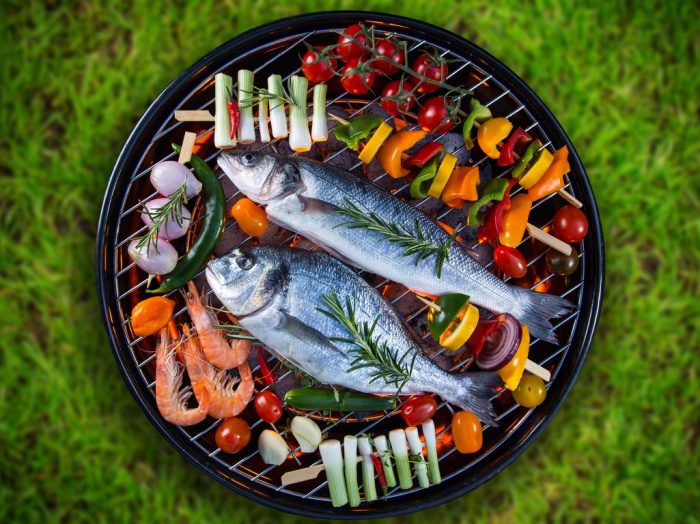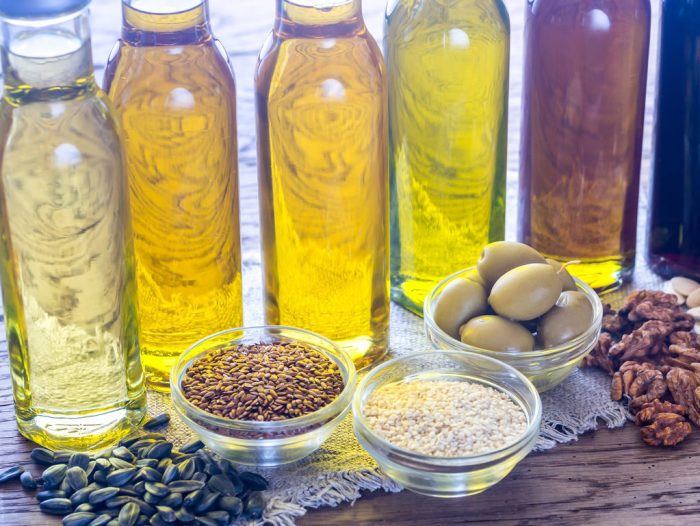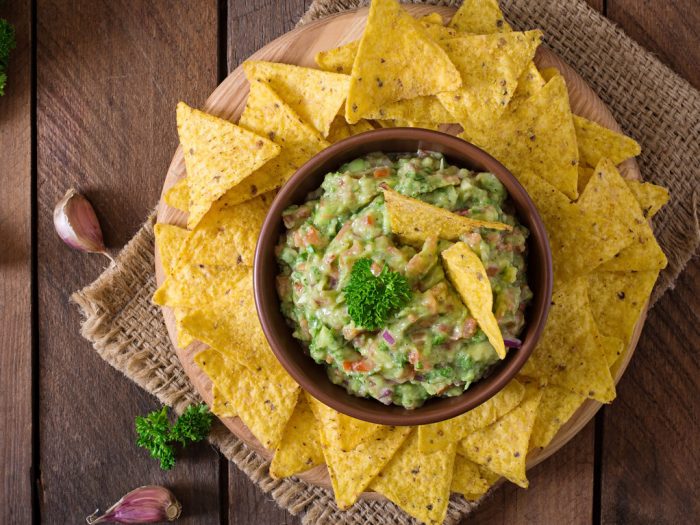For some people, fish is one of the tastiest things they can have. If you’re one of them (like I am), then, maybe, it’s time to learn that there are many different ways to cook fish, besides just throwing it on the grill. Take a peek at this article, especially if you’re a healthy eater and want to expand your culinary horizons!
I enjoy eating fish sooo much! Unfortunately, I don’t have fish as often as I’d like, because my daughter (still) refuses to give it a chance. But, when I do have fish on the table, I like to play with different cooking techniques – I keep thinking that maybe this or that will convince her to take a bite.
If you’re in love with fish as much as I am, don’t let boredom interfere! Here are five ways to cook fish!
5 Ways to Cook Fish
Poaching
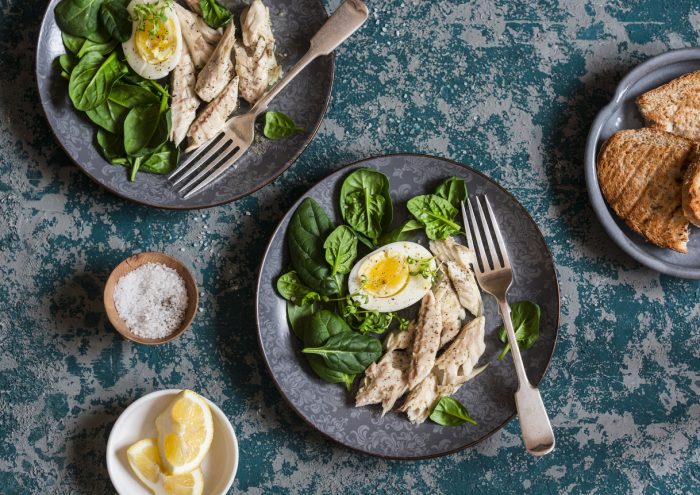
If you’re trying to cut down on calories, then poaching is the most suitable cooking technique for you. It’s an easy and quick way to cook fish.
To poach fish, you usually need some liquid, herbs, an acid – like lime, lemon or oranges, and maybe some vegetables (onions, celery, carrots). Traditionally, fish was poached in a court-bouillon, a clear broth used for poaching other foods, usually fish or seafood.
If making court-bouillon sounds too complicated, then poach your fish in water, by adding a little lemon juice, garlic, onion, herbs, and spices to it. After you combine the water with your chosen ingredients, bring the liquid to a simmer, lower in the fish and then remove the pot from the heat. The fish will continue to cook in the hot liquid, and it will be ready when its flesh becomes opaque. The poaching liquid flavors the fish as it cooks and makes it really moist and tender.
Some of the best fishes to poach are halibut, salmon, tuna, sturgeon, and striped bass.
Grilling
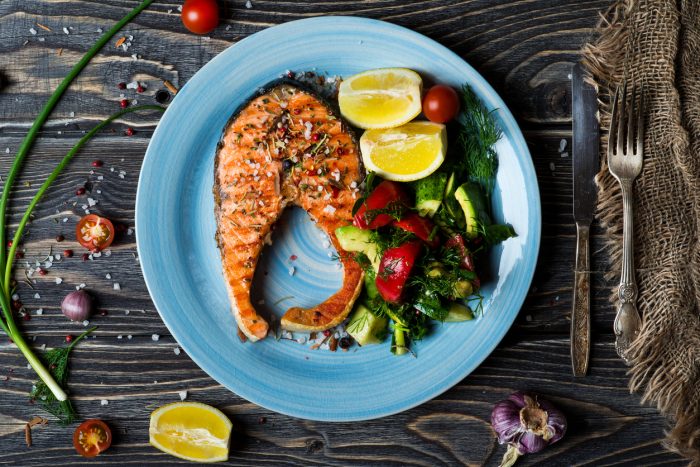
Grilling is one of the simplest ways to cook fish and maybe the one that gives you the tastiest final dish, because of the nice, crisp skin that you’ll obtain. Usually, grilling is the best option for small fillets, but you can also grill the entire fish if it’s not too big.
Brush the fish with olive oil. You can also add lemon juice and herbs. Then, sprinkle the skin with salt. After this step comes the tricky part. Some fish you should cook directly on the grill, and others you should grill after you place them on a foil.
Fish with a harder texture like tuna, salmon, halibut, and swordfish can be cooked directly on the grill.
Fish with a delicate texture like tilapia, sole, and flounder shouldn’t be placed directly on the grilling surface, because their flesh will break.
When you grill fish, place it on the heated surface (usually medium-high heat) skin-side up and grill until its skin is crisp. Don’t try to move the fish until you see that the skin side has a nice sear and looks crisp. That is the moment to flip it over. The grilling time depends on the thickness of your fillet. Make sure the fish is not wet, but dry enough when you place it on the grill.
Pan-frying
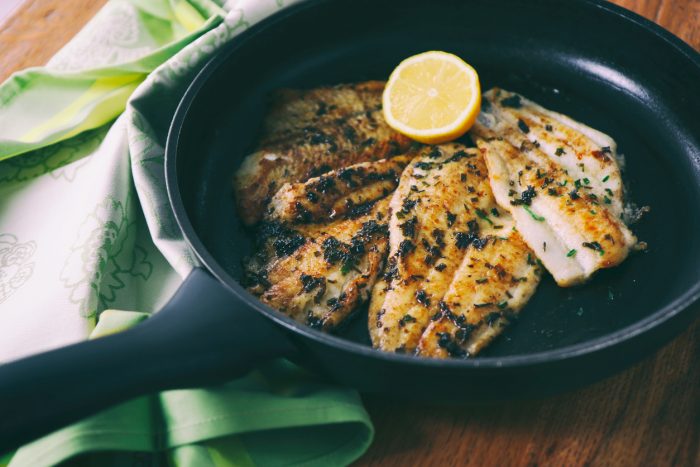
One of the most rewarding ways to cook fish is pan-frying it. To make it perfect, you need a heavy-based non-stick frying pan. Cooks say that, if you don’t have a good frying pan, you should coat the fish with flour to prevent it from sticking.
Follow these steps: make sure the pan is hot, then add a thin slick of oil, and just then lay the fish in it. Only that way you’ll get the perfectly crispy skin. Fry the fish skin-side down for most of the cooking time, then flip it over for the final 30 seconds.
Also, when you pan-fry a fish fillet, make sure to dry it completely using paper towels before cooking it. Season the fish with salt and pepper just before frying it, not too ahead of time.
The best fishes for pan-frying are red snapper, salmon, tilapia, halibut, and sea bass because they have a thin, fast-cooking skin. You also fry small fish. But avoid pan-frying tough-skinned species such as tuna and swordfish.
Roasting
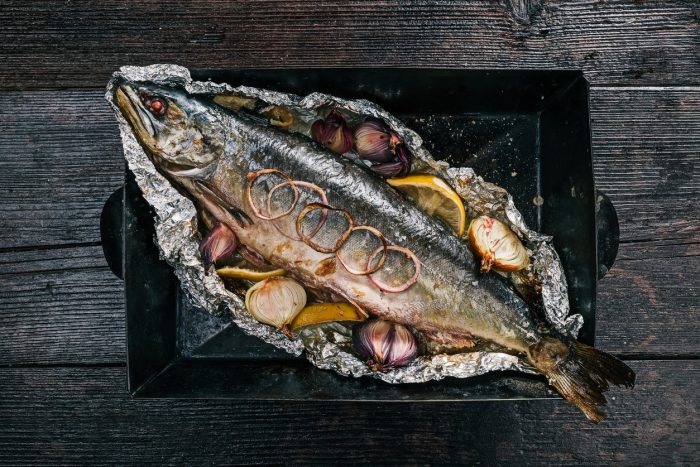
If you want to cook a whole fish, the handiest and ‘cleanest’ method is to roast it. In the end, you’ll have a crisp skin and a succulent flesh. Of course, this doesn’t mean you can’t roast smaller pieces of fish. You can!
Start with preheating your oven. The cooking time depends on the weight of the fish. For example, a 1-pound/450 grams fish will take about 20-30 minutes to roast. The bigger the fish, the higher the temperature.
Rub the fish with olive oil and sprinkle salt and pepper on the inside and on the outside. Roasting a whole fish gives you the opportunity to stuff it with veggies, aromatic fresh herbs, or citrus before placing it in the oven.
Test if it’s cooked before taking it out of the oven. How? Well, make sure the flesh flakes easily when poked with a fork. If you’re cooking a big fish, you may need to add some liquid halfway through the cooking time. Follow your recipe!
For roasting, choose cod, arctic char, sea bass, sea bream, red snapper, sable, trout, or salmon.
Currying
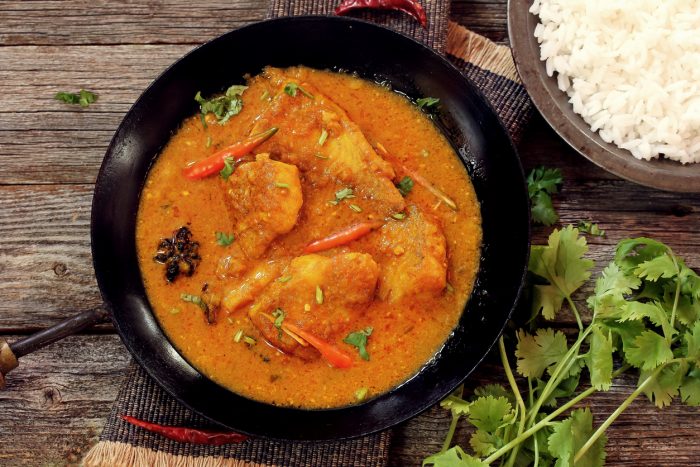
If you can’t find fresh fish at your local market, then buy some frozen pieces of fish. You can also use fish leftovers from your own freezer. What to do with them? Well, they’re perfect for a curry. This is a great idea especially when you don’t have much time because the fish cooks quickly. If necessary, thaw and pat-dry the fish pieces before cooking.
To make a fish curry, all you have to do is drop the fish pieces into a simmering curry sauce (usually made with turmeric, cumin, ginger, and fresh chili). Make sure you remove the fish bones, then add the largest pieces of fish into the sauce first. After 1-2 minutes, add the smaller pieces. Cook until the fish is soft and breaks apart easily.
If you want more ideas, you can check out our fish and seafood recipes here.

